Potrebujeme váš súhlas na využitie jednotlivých dát, aby sa vám okrem iného mohli ukazovať informácie týkajúce sa vašich záujmov. Súhlas udelíte kliknutím na tlačidlo „OK“.
ASTM D747-10
Standard Test Method for Apparent Bending Modulus of Plastics by Means of a Cantilever Beam (Withdrawn 2019)
Automaticky preložený názov:
Štandardná skúšobná metóda pre zrejmé, ohybový modul z plastov pomocou Výložník
NORMA vydaná dňa 1.4.2010
Informácie o norme:
Označenie normy: ASTM D747-10
Poznámka: NEPLATNÁ
Dátum vydania normy: 1.4.2010
Kód tovaru: NS-38544
Počet strán: 6
Približná hmotnosť: 18 g (0.04 libier)
Krajina: Americká technická norma
Kategória: Technické normy ASTM
Kategórie - podobné normy:
Anotácia textu normy ASTM D747-10 :
Keywords:
apparent bending modulus, bending movement, cantilever beam, stiffness, Apparent bending modulus, Cantilever testing, Deformation--plastics, Bending moment, Flexibility--plastics, Stiffness--plastics, ICS Number Code 83.080.01 (Plastics in general)
Doplňujúce informácie
| Significance and Use | ||||||||||||
|
This test method provides a means of deriving the apparent bending modulus of a material by measuring force and angle of bend of a cantilever beam. The mathematical derivation assumes small deflections and purely elastic behavior. Under actual test conditions, the deformation has both elastic and plastic components. This test method does not distinguish or separate these, and hence a true elastic modulus is not calculable. Instead, an apparent value is obtained and is defined as the apparent bending modulus of the material. The tangent modulus obtained by Test Methods D790 is preferred, when the material can be tested by the Test Methods D790 test procedure. Because of deviations from purely elastic behavior, changes in span length, width, and depth of the specimen will affect the value of the apparent bending modulus obtained; therefore, values obtained from specimens of different dimensions are not necessarily comparable. Rate of loading is controlled only to the extent that the rate of angular change of the rotating jaw is fixed at 58 to 66°/min. Actual rate of stressing will be affected by span length, width, depth of the specimen, and weight of the pendulum. For many materials, there are specifications that require the use of this test method, but with some procedural modifications that take precedence when adhering to the specification. Therefore, it is advisable to refer to that material specification before using this test method. Table 1 of Classification System D4000 lists the ASTM materials standards that currently exist. Note 2—A discussion of the theory of obtaining a purely elastic bending modulus, using a cantilever beam testing apparatus, can be found in Appendix X1. The results obtained under actual test conditions will be the apparent bending modulus. |
||||||||||||
| 1. Scope | ||||||||||||
|
1.1 This test method covers the determination of the apparent bending modulus of plastics by means of a cantilever beam. It is well suited for determining relative flexibility of materials over a wide range. It is particularly useful for materials too flexible to be tested by Test Methods D790. 1.2 The values stated in SI units are to be regarded as the standard. The values given in parentheses are for information only. 1.3 This standard does not purport to address all of the safety concerns, if any, associated with its use. It is the responsibility of the user of this standard to establish appropriate safety and health practices and determine the applicability of regulatory limitations prior to use. Note 1—There is no known ISO equivalent to this standard. |
||||||||||||
| 2. Referenced Documents | ||||||||||||
|
Podobné normy:
Historická
15.11.2009
Historická
1.2.2014
Historická
1.9.2013
Historická
1.5.2014
Historická
1.10.2009
Historická
15.12.2010


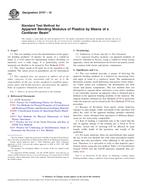
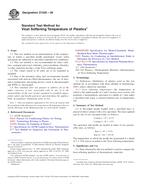 ASTM D1525-09
ASTM D1525-09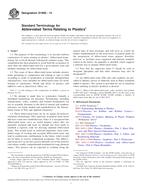 ASTM D1600-14
ASTM D1600-14 ASTM D1708-13
ASTM D1708-13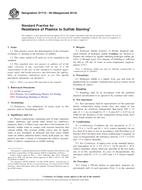 ASTM D1712-09(2014)..
ASTM D1712-09(2014)..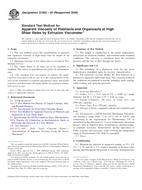 ASTM D1823-95(2009)..
ASTM D1823-95(2009)..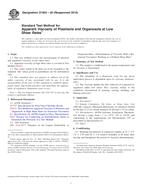 ASTM D1824-95(2010)..
ASTM D1824-95(2010)..
 Cookies
Cookies
